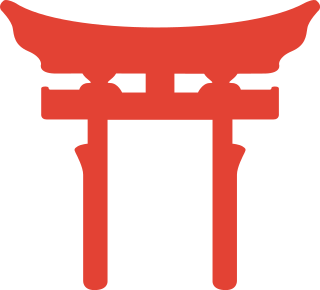
The Shoku Nihongi (続日本紀) is an imperially-commissioned Japanese history text. Completed in 797, it is the second of the Six National Histories, coming directly after the Nihon Shoki and followed by Nihon Kōki. Fujiwara no Tsugutada and Sugano no Mamichi served as the primary editors. It is one of the most important primary historical sources for information about Japan's Nara period.
The Shasekishū (沙石集), also read as Sasekishū , translated into English as Sand and Pebbles, is a five-volume collection of Buddhist parables written by the Japanese monk Mujū in 1283 during the Kamakura period.

Jōgū Shōtoku Hōō Teisetsu (上宮聖徳法王帝説), also read as Jōgū Shōtoku Hōō Taisetsu, is a biography of Shōtoku Taishi. It is one scroll in length and is a National Treasure of Japan.
Takahashi Ujibumi (高橋氏文) is a historical clan record of the Takahashi clan. It served as an appeal for court arbitration between two fighting clans.

Kogo Shūi (古語拾遺) is a historical record of the Inbe clan of Japan written in the early Heian period (794–1185). It was composed by Inbe no Hironari (斎部広成) in 807 using material transmitted orally over several generations of the Inbe clan.
Ukiyoburo (浮世風呂) is a Japanese novel written by Shikitei Sanba between 1809 and 1813. It belongs to the kokkeibon genre, of which it is one of the masterpieces.
Tsutsumi Chūnagon Monogatari is a post late-Heian period Japanese collection of short stories.
Nihon Ryōiki (日本霊異記) is an early Heian period setsuwa collection. Written by Kyōkai between 787 and 824, it is Japan's oldest collection of Buddhist setsuwa. It is three volumes in length.
The Ryōunshū (凌雲集) was the first imperially commissioned Japanese kanshi collection. It was compiled by Ono no Minemori, Sugawara no Kiyotomo and others under the command of Emperor Saga. The text was completed in 814.
Bunka Shūreishū (文華秀麗集) is the second imperially commissioned Japanese kanshi collection. The text was compiled by Fujiwara no Fuyutsugu, Sugawara no Kiyotomo, Nakao Ō, Isayama no Fumitugu, Shigeno no Sadanushi, and Kuwahara no Haraaka under the command of Emperor Saga. The text was completed c. 818, four years after the previous imperial collection, Ryōunshū.

Sangō Shiiki (三教指帰) is a dialectic allegory written by Kūkai in 797. It is Japan's oldest comparative ideological critique.
The Takamura Monogatari, also called the Takamura Nikki or the Ono no Takamura shū, is a Japanese uta monogatari that was written any time between the mid-Heian period to the early-Kamakura period. It is in one volume and consists of two distinct sections. The first section describes a young Ono no Takamura's tragic love affair with his half-sister. The second section is taken to be by a different author, and is dated somewhat later than the first. Both authors are unknown, and the poems attributed in the tale to Takamura are treated as dubious at best.
Nihon Kōki (日本後紀) is an officially commissioned Japanese history text. Completed in 840, it is the third volume in the Six National Histories. It covers the years 792–833.
Shoku Nihon Kōki (続日本後紀) is an officially commissioned Japanese history text. Completed in 869, it is the fourth volume in the Six National Histories. It covers the years 833–850.
Shinsen Shōjiroku is an imperially commissioned Japanese genealogical record. Thirty volumes in length, it was compiled under the order of Emperor Saga by his brother, the Imperial Prince Manta. Also by Fujiwara no Otsugu and Fujiwara no Sonohito et al. It was initially completed in 814, but underwent a revision to be recompleted in 815.
Ruijū Kokushi (類聚国史) is a historical text that categorizes and chronologizes the events listed in the Six National Histories. It was compiled by Sugawara no Michizane and completed in 892. The text was commissioned by Emperor Uda.
Nihon Montoku Tennō Jitsuroku, abbreviated as Montoku Jitsuroku, is an officially commissioned Japanese history text. Completed in 879, it is the fifth text in the Six National Histories series. It covers the years 850-858, the years of reign of the 55th Japanese sovereign, Emperor Montoku (827-858).

Utsubo Monogatari is a late 10th century Japanese story. It is Japan's oldest full-length narrative.

Mumyōzōshi is an early 13th-century Japanese text. One volume in length, it is the oldest existing Japanese text on prose literary criticism. The author is unknown, but the leading candidate proposed is Shunzei's Daughter. Other candidates who have been proposed include her maternal grandfather Shunzei himself and the monk Jōgaku (上覚).

Fūyō Wakashū (風葉和歌集) is a late 13th century collection of poetry from Japanese literature.




